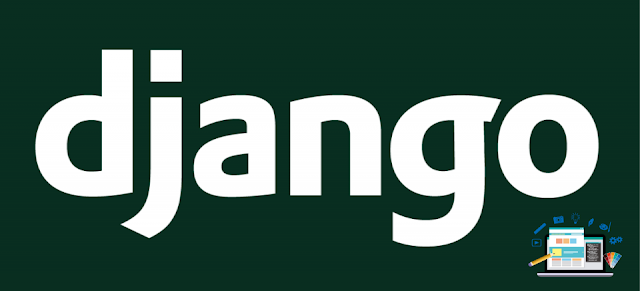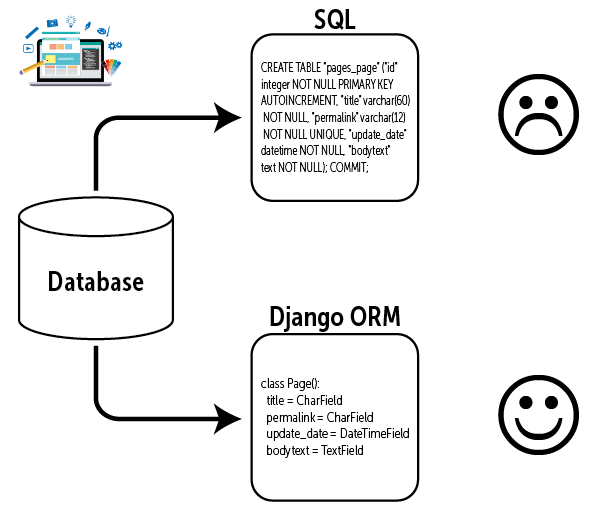Python is a well-known programming language, and it was the second most popular language among GitHub projects in 2017. You've probably heard about Django if you're interested in Python and web development. Because of the growing popularity of web frameworks, it might be difficult to learn a new framework and decide which one to use. Today, we'll take a deep dive into Django so that we can fully comprehend this incredible technology.
What is Django?
Django is a web framework for MVT that is used to create web applications. It describes itself as a “batteries included” web framework that emphasizes robustness and simplicity in order to assist web developers in writing clean, efficient, and powerful code. It is one of the world's most well-known web frameworks, as well as one of the most widely used frameworks. Instagram, YouTube, Google, and even NASA use it on their website. So, to learn more about it, let's break it down even more.
Structure of Django
The MVT architecture, which stands for Model-View-Template, is used by Django. MVT is a Django variant of the well-known MVC structure, which is why it operates similarly to other frameworks. When a request is received by the Django server, the URL router routes it to the proper view. The view then uses the models to retrieve the data, fill the template, and return it to the user.
Models by Django
What is the purpose of Django?
Django's model takes use of a strong ORM layer that simplifies database and data management while also speeding up the development process.
Without Object-Relational-Mapping, developers would have to create the tables and define the queries or procedures themselves, which can result in a large amount of SQL that is difficult to track.
The ORM layer allows you to create all of the table definitions in easy Python code, and it handles the translation to the appropriate query language. It also makes CRUD activities easier.
In actuality, the developer does not need to comprehend all of the intricate SQL or what it means, but it is worth noting that knowing SQL will enable you to design better and faster queries as well as make your website more secure.
Unlike other frameworks, the models are all contained in a single file, models.py, which might make larger projects feel crowded.
Many database systems are supported by Django. SQLite is ideal for testing and development because it can be used right away without the need to instal additional applications. You can use MYSQL or PostgreSQL for production, and if you want a NoSQL database, you can use MongoDB with Django, and here's more information on the topic.
Django’s Templates
The template layer separates the data from how it is presented and perceived by the user. The template layer resembles the View layer in MVC. If you're acquainted with templating in other languages, Django works in a similar way; you use an HTML-like syntax that is eventually compiled to HTML with all of the appropriate data injected. Of course, if you wish to generate XML documents or JSON files, there are more formats for templates beyond HTML.
DRY is a design pattern that stands for Don't-Repeat-Yourself and is one of Django's basic template design principles. It means that you shouldn't, at least in most circumstances, by copying and pasting the code. Instead, your template should be subdivided into reusable components like the side navigation bar, the main navigation bar, the page header, the page footer, and so on. This reduces repetition and allows for more efficient and cleaner code writing.
One of the things that sets Django apart is the importance it places on security. This does have an impact on the template's writing.
You can write ruby code inside your views in Rails, for example, and assign values to variables (not that this is something you should do).
This is not the case with Django; you cannot run Python code in the template or assign a value to a variable. Simply explained, Django prohibits code execution in the template layer and only allows access to display logic, which is a simple yet effective solution to a number of online vulnerabilities.
Django’s Views
The business logic layer in Django is the View. It's in charge of handling the user's request and returning a legitimate response. It retrieves data from the model, grants each template access to specified data to show, or performs some data processing ahead of time. Django views can now be either functions that handle the request and deliver a response, or classes that can do much more, akin to Laravel and Rails controllers.
The URL router
Django's URL router is more sophisticated than those of other frameworks like Rails or Laravel. The issue is that it makes use of regular expressions, which are difficult for beginners to understand. The structure of the URL router, on the other hand, is not difficult; it's just the syntax that you might struggle with at first.
Advantages of Django
1. Batteries included
Django prides itself on being a framework that comes with all of the necessary batteries. That is to say, it comes with a lot of stuff out of the box that you can use or ignore depending on your needs. Rather than writing your own code (the power), you can just import the packages you want to use.
It's part of Django's convention over configuration approach, and it lets you employ solutions developed by world-class experts. Django batteries cover a wide range of subjects, including:
- Using the auth package for authentication
- Admin package interacts with the admin.
- Sessions package allows you to manage your sessions.
- Using the Messages package to manage temporary or session-based messages
- Using the Sitemaps package to create a Google sitemap XML
- With Postgres Package, you may take advantage of some unique Postgres functionalities.
- Using the content types framework to connect to content "types"
2. Python
Because Django is written in Python, it benefits from some of Python's fame and power. Python is one of the easiest programming languages to learn for beginners, if not the easiest, and it's used in many basic computer science classes throughout the world. According to the 2017 Stackoverflow Developers Survey, Python is currently more popular than PHP, and Python jobs pay more than C# and C++ positions.
3. Community
One of the finest aspects of Django is its community; they are welcoming and actively striving to make the framework more beginner-friendly while also adding new features. The documentation for Django is fairly extensive and may be used as a stand-alone tutorial to help you understand various capabilities and utilise it as a primary source of information.
4. Scalable
When choosing a framework, most developers consider the long term implications of their decision. That's why many people look for a scalable framework, and Django is one of them. As Nigel points out in his essay, it enables you to take a variety of scalability-related actions, such as running separate servers for the database, media, and the application itself, or even using clustering or load-balancing to disperse the programme across numerous servers.
5. Built-in Admin
When the Django team designed the framework, they were very careful to consider user and client satisfaction. It's absurd to build your own backend admin interface only to be able to handle your data using basic CRUD operations. According to the docs, Django comes with an administrative interface that is both professional and versatile straight out of the box, allowing developers to create with presentation in mind.
Disadvantages of Django
While Django is a fantastic framework, it does have a few drawbacks that you may or may not find bothersome. To begin with, supplying URLs with regular expressions is not an easy process, at least for novices. It also feels bloated for little projects, and some users find it overcrowded with large projects because models, for example, are all contained in a single file. If you don't know that template failures fail quietly by default, you could waste a lot of time trying to figure out what's wrong with your application, or even worse, you might not even realise it has a problem. It's also a highly opinionated framework that has a monolithic feel to it. There is one widely accepted and recommended method of doing things, and you are expected to follow it.
How to learn Django
To begin, familiarize yourself with Python and the natural flow of web applications. On different sites, you can find the top Django tutorials suggested by the programming community.
You can choose the most popular tutorial or a tutorial that suits your learning style: For beginners or expert learners, a video-based course or a book is available. Start with CS50's web development lectures, where you'll also learn about Python and how to use it.
Bill Weinman's Lynda course on Python is a masterclass, and you can also find courses on Python and Django on Udemy. The official Django documentation is also a wonderful place to start, as it includes comprehensive tutorials, not just API usage, as previously stated.










Django is a perfect framework. I like it. It's so easy
ReplyDeleteIt's Perfect framework.Great work.
ReplyDeleteGreat
ReplyDeleteGreat effort
ReplyDelete